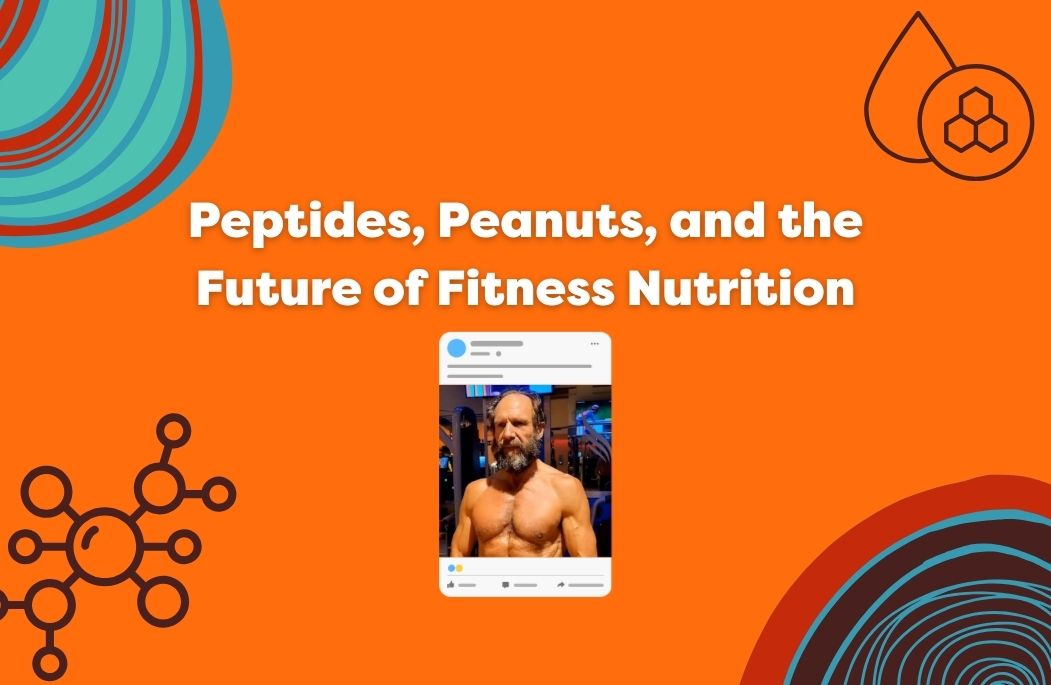What if your snack could help you feel fuller, build muscle, and even lose fat?
Peptides are back in the spotlight, and for good reason. Once thought of as just another supplement buzzword, peptides are now recognized for their real impact on fitness, weight management, and overall health.
Dr. Juan Salinas, sat down with QuHarrison Terry to break down how these tiny protein fragments are reshaping the way we think about food and performance.
What Are Peptides, Really?
Peptides are short chains of amino acids—smaller than proteins but just as powerful. Some aid in muscle growth. Others help with fat loss. The body naturally produces many peptides, but synthetic versions are also used in medicine and fitness.
Juan pointed out one in particular that’s gained a lot of attention: GLP-1.
GLP-1: The Satiety Peptide
GLP-1 is not some AI algorithm—it’s a peptide your body makes to help you feel full. Medications like Ozempic use synthetic versions of GLP-1 to reduce appetite and promote weight loss.
But did you know you can stimulate your body's natural GLP-1 with the right foods?
Start with soluble fiber.
Beans, oats, barley, and peanuts all feed the gut’s microbiome, which then triggers the release of natural GLP-1.
Add healthy fats to the mix.
Peanut oil, olive oil, avocado oil, and fish oil not only boost GLP-1 but also slow down how fast your stomach empties. That means you stay full longer, and naturally consume fewer calories.
High-protein foods—like beans, lean meats, and eggs—support GLP-1 release through amino acid signaling.
So why reach for synthetic versions when a balanced diet can achieve similar effects over time?
Peptides and Muscle Growth: Ipamorelin and Tesamorelin
GLP-1 helps reduce fat. But what about building muscle?

Dr. Juan introduced two synthetic peptides: Ipamorelin and Tesamorelin. Both trigger the release of human growth hormone (GH). GH encourages muscle cells to grow and stimulates fat breakdown.
That sounds promising—but can your body produce GH naturally?
Yes. Foods rich in arginine and glutamine help.
Think lean meats like turkey and salmon. Think whey protein. Think peanuts and beans.
Peanuts, in particular, are high in arginine and moderately high in glutamine. That’s one more reason why snacks like Pnuff Crunch go beyond satisfying hunger—they support your fitness goals from the inside out.
How Does Insulin Play Into This?
Fat loss isn’t just about what you burn. It’s about what you store. And insulin plays a central role in that process.
High spikes in insulin, usually caused by eating simple sugars, block fat breakdown. Insulin stops lipase, the enzyme that helps burn stored fat. At the same time, it activates lipoprotein lipase, which stores fat.
So how can you prevent insulin spikes?
Eat low glycemic index foods.
Beans, peanuts, whole grains, and healthy fats keep blood sugar stable. They reduce insulin spikes and allow the body to tap into fat stores.
What would happen if more people understood this? Would we still chase crash diets and expensive pills?
Beyond Science: The Everyday Impact
The science is clear—your diet plays a bigger role than any quick fix. But knowledge means little without action.
Are the snacks you're eating working for you—or against you?
Pnuff Crunch protein puffs were designed with this science in mind. It’s a peanut-based snack that delivers fiber, protein, and healthy fats. Not only does it taste good, but it also fits into the larger strategy of supporting GLP-1 production, muscle building, and fat loss.
So next time you’re reaching for a snack, ask yourself:
Is this helping me feel full?
Is it supporting my body’s natural hormone balance?
Is it keeping my insulin levels steady?
And most importantly—does it make me feel better, not just now, but long-term?
Peptides may be small, but their impact is anything but.



